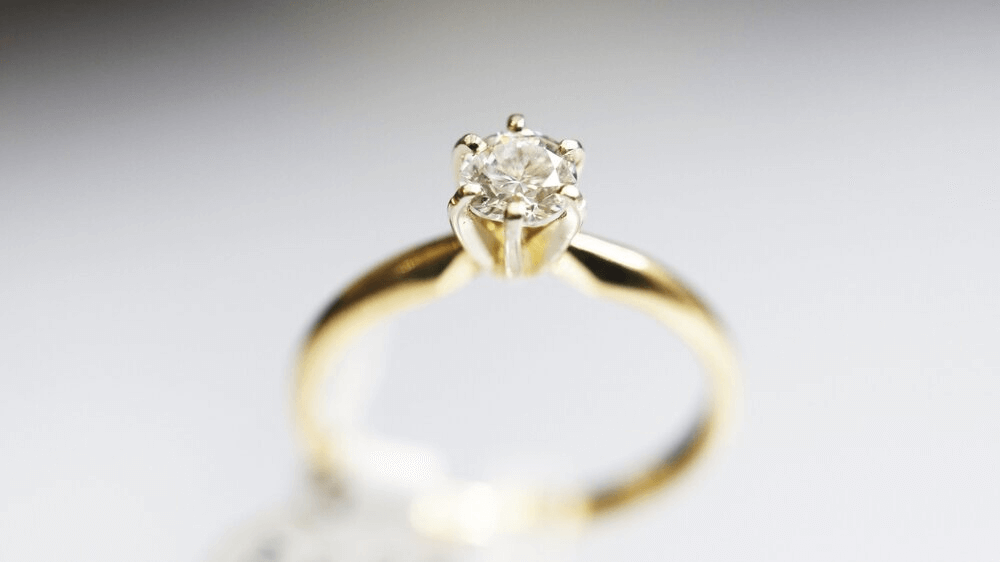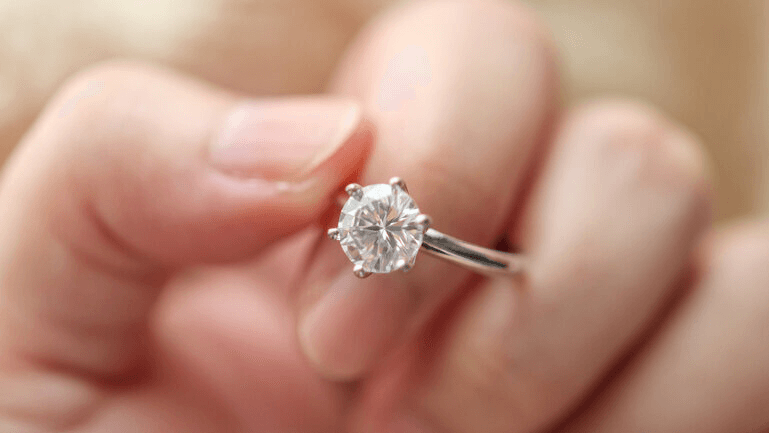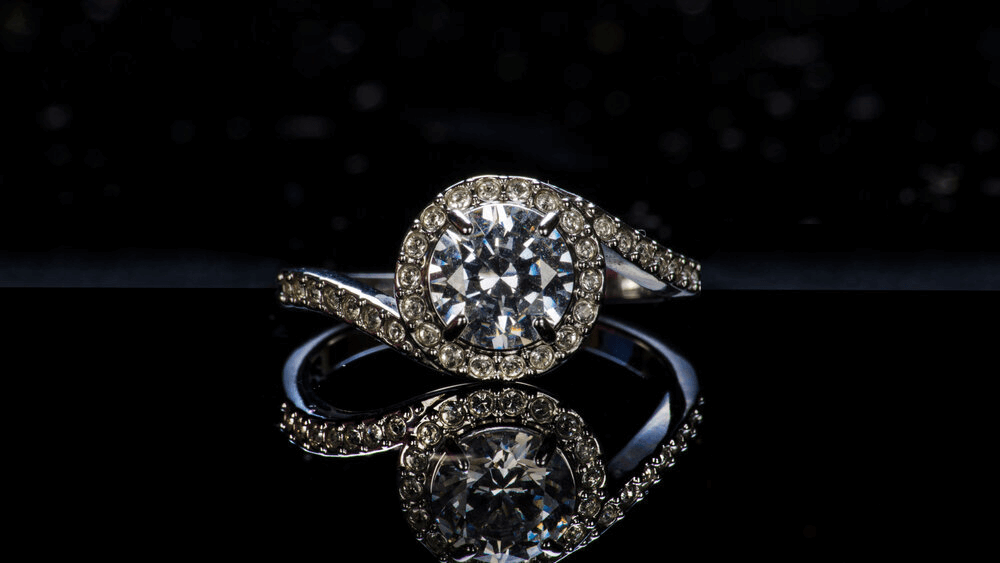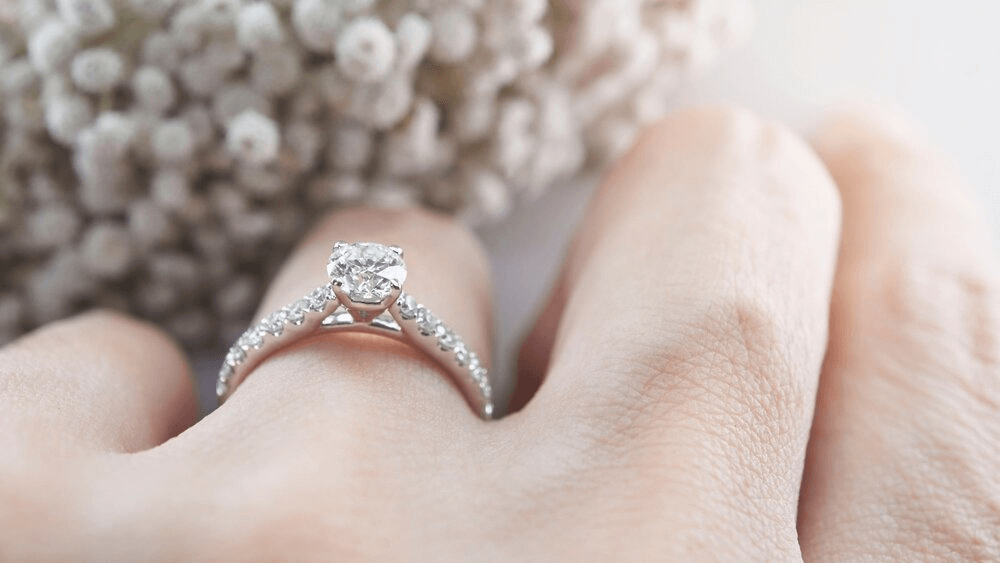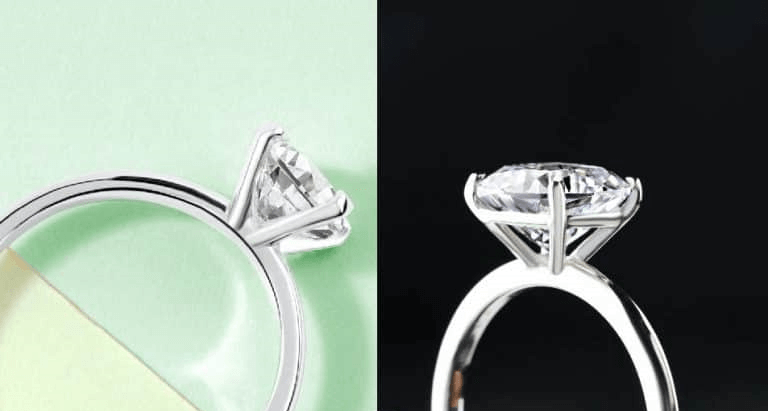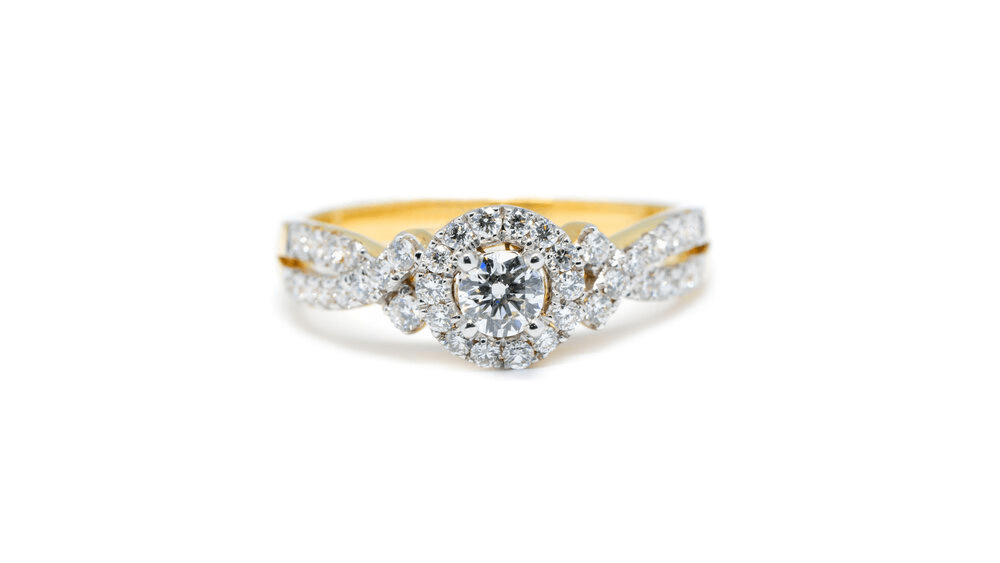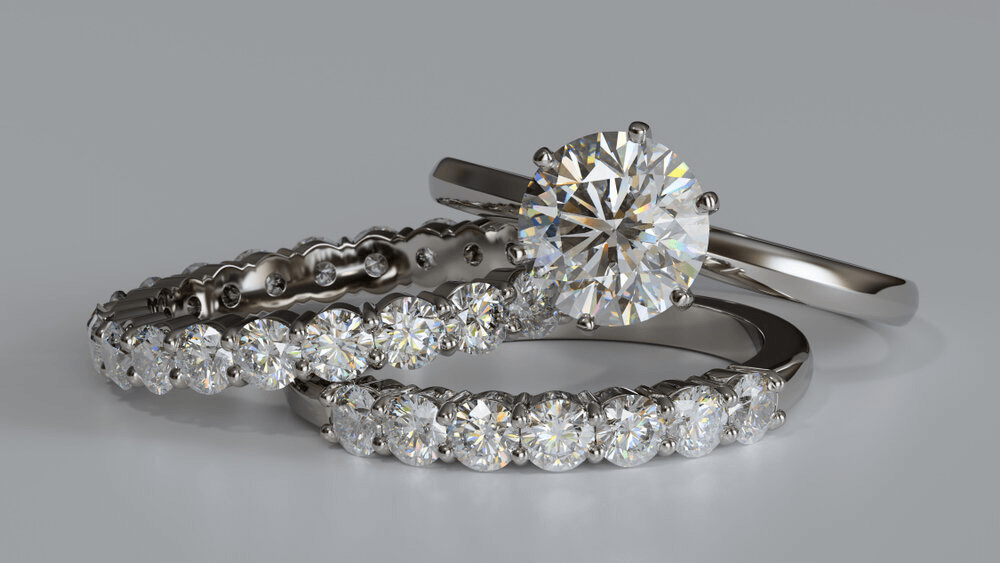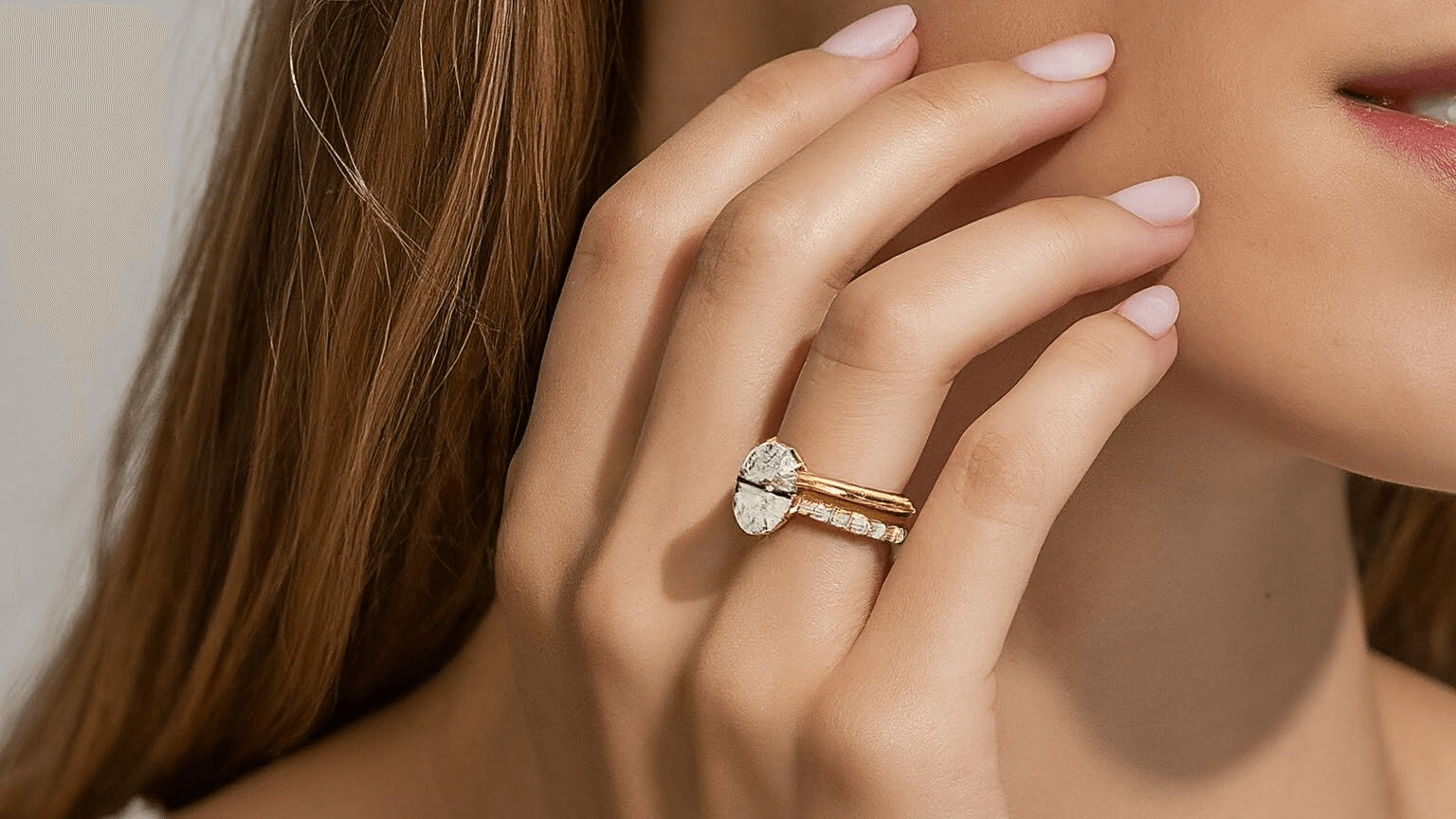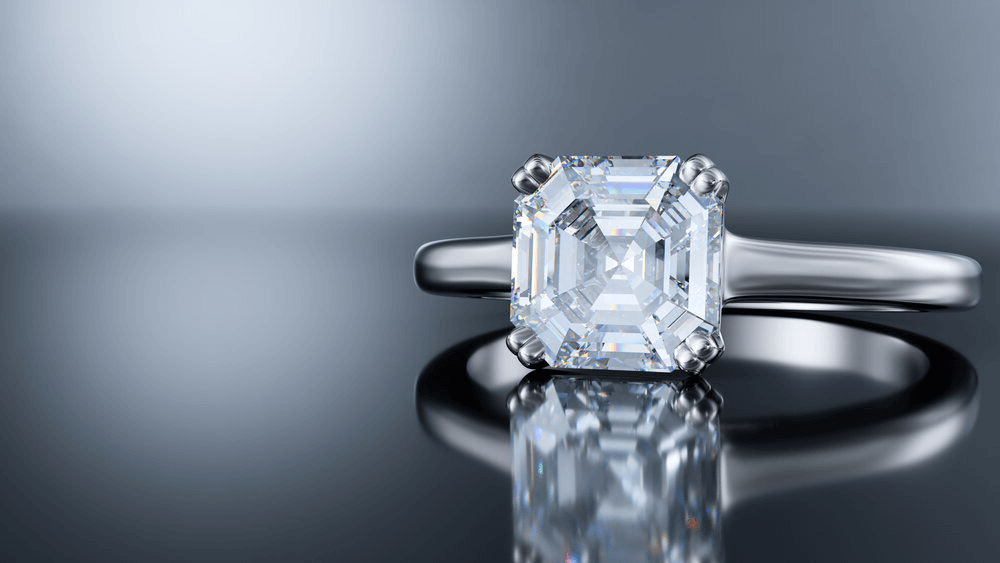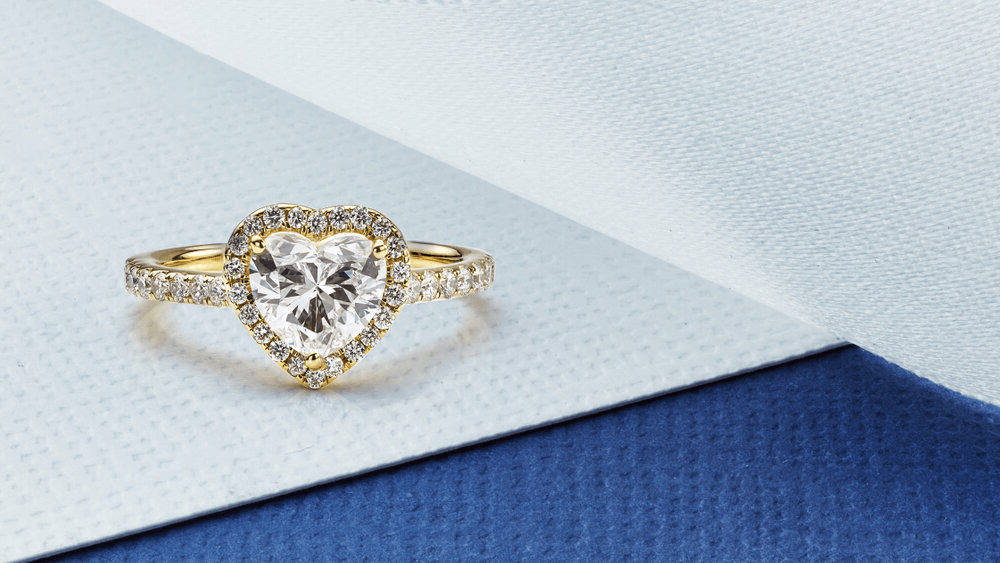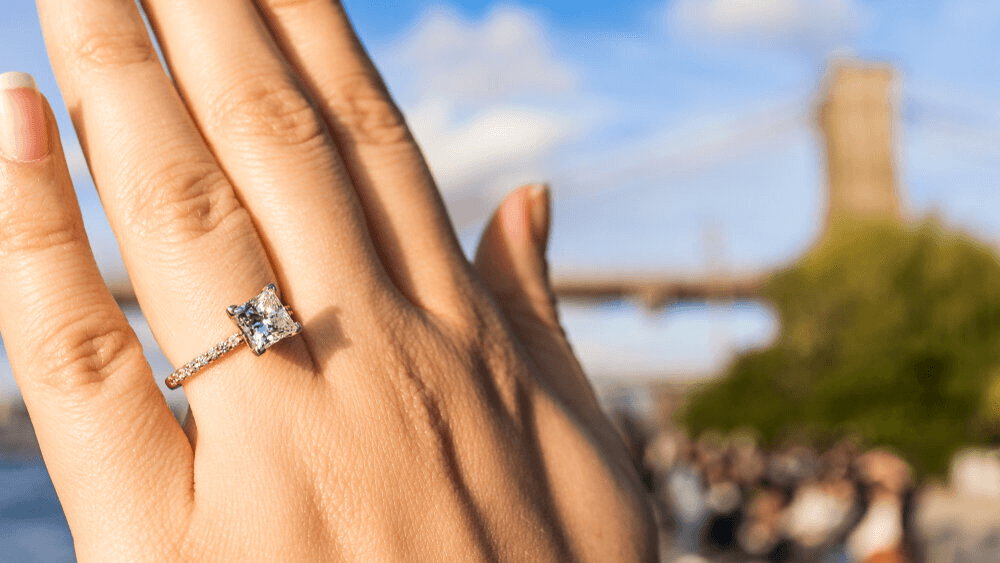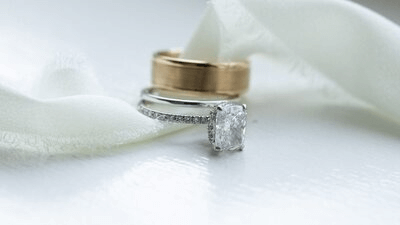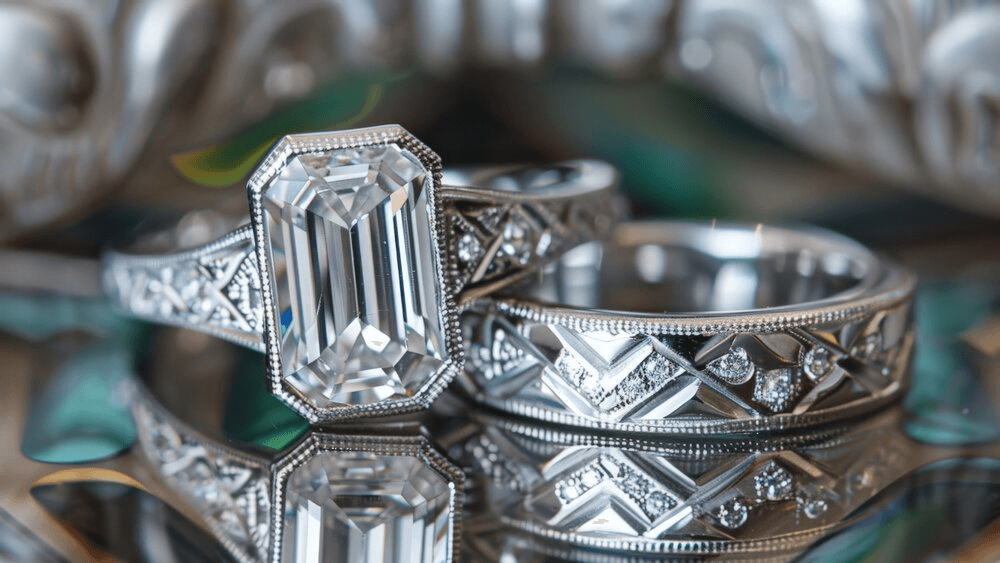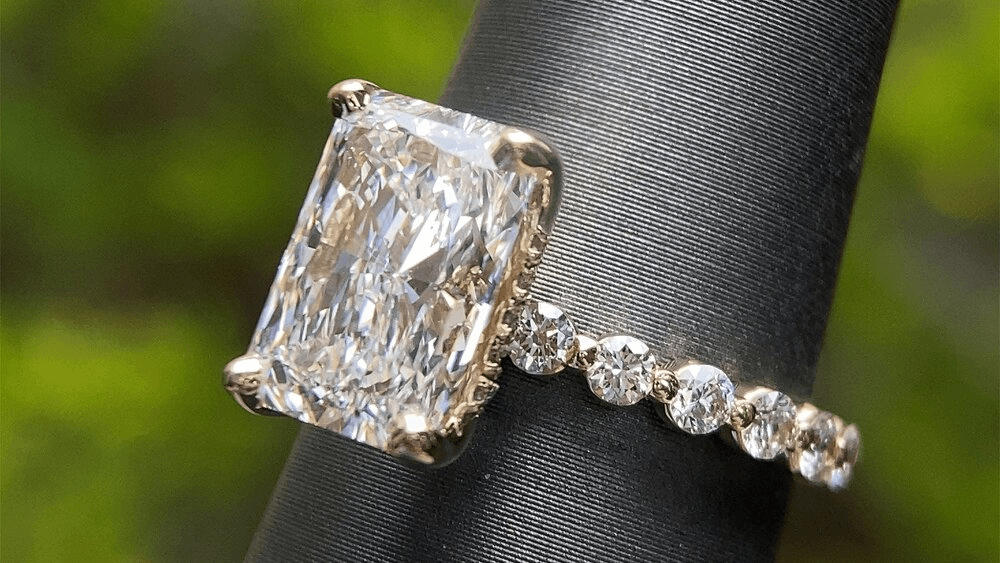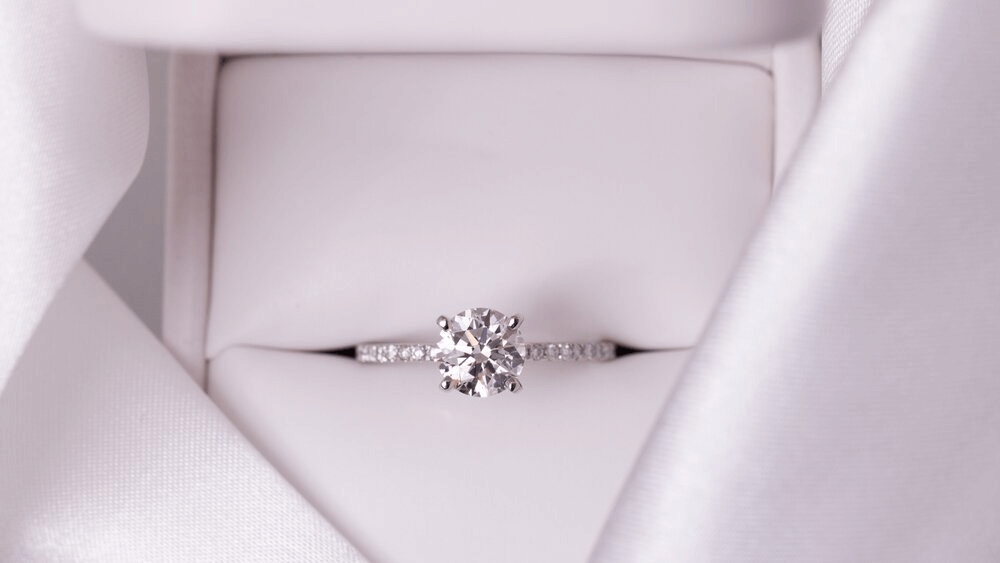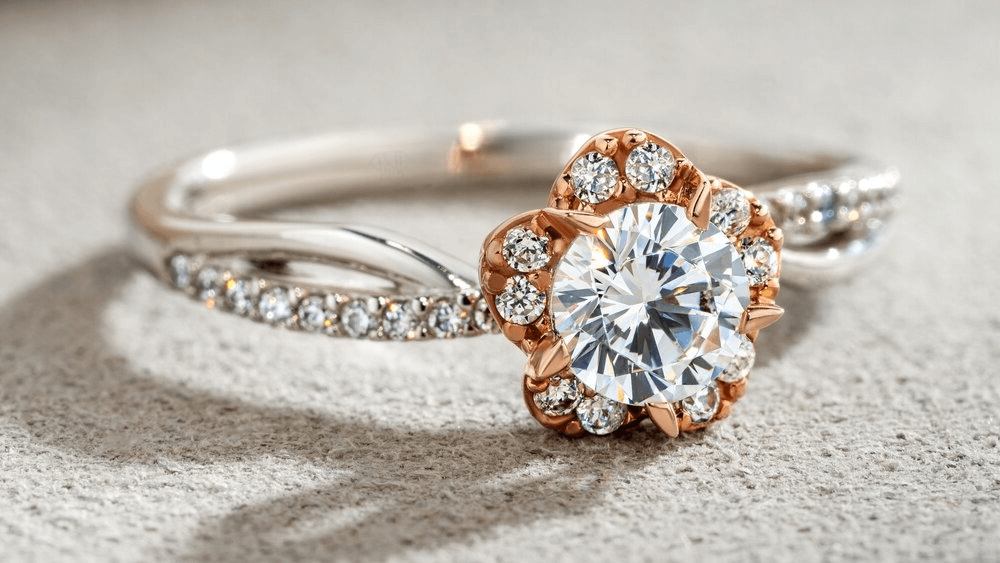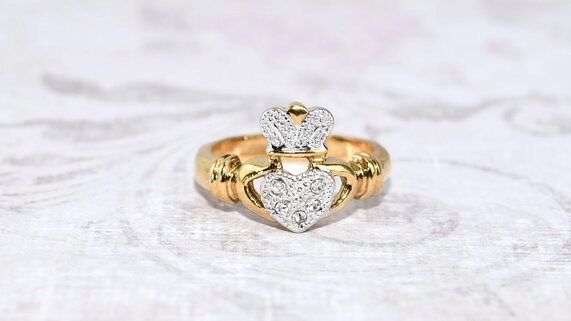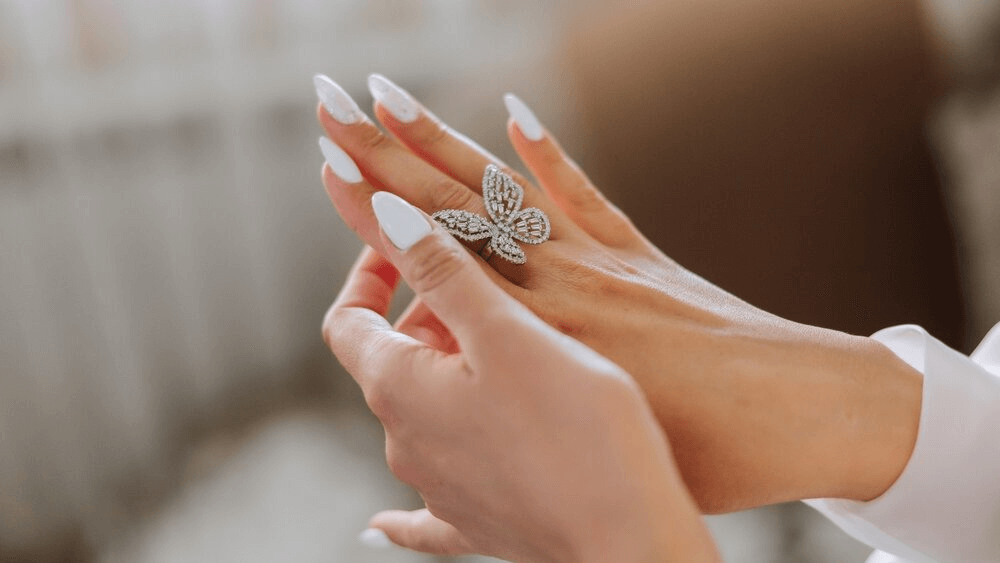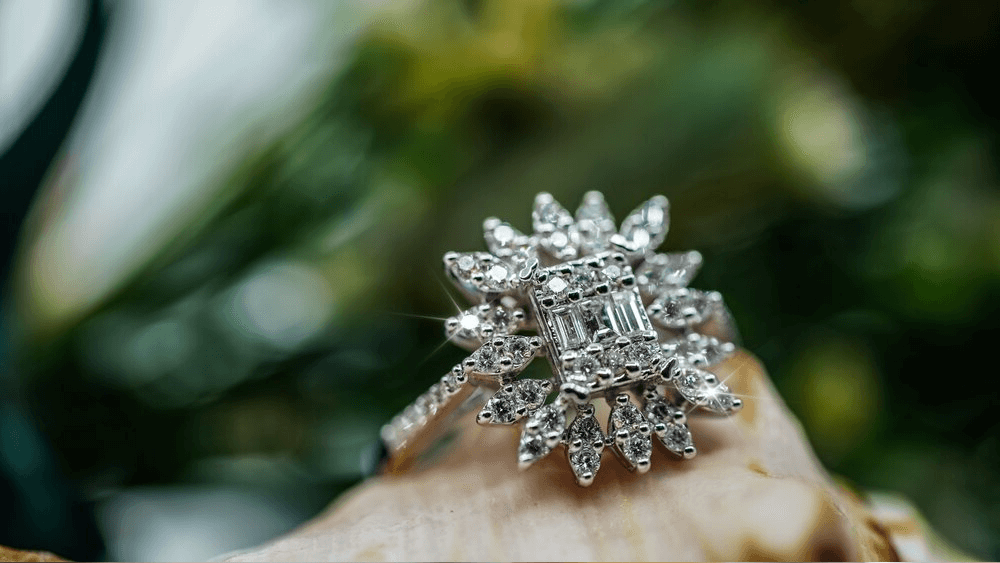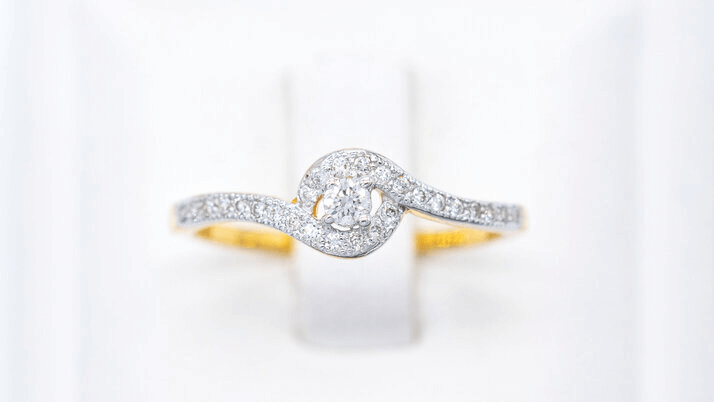Say Yes to 11 Diamonds in Your Flower Engagement Ring

By Gary A.

Edited by Olivia H.
Published Aug 17, 2021
Edited on Mar 31, 2025
The intricate design of a flower engagement ring beautifully blends nature’s elegance with timeless romance, making it an eye-catching choice for those seeking something truly unique.

Navigate This Guide:
- 8 Quick Tips for Buying a Diamond Engagement Ring with a Flower Setting
- Introduction
- Diamonds in Flower Engagement Ring Settings
- Practical Considerations
- Cost and Value Considerations
- Our Expert Take
- 7 FAQs
Before we dive deeper into the specifics, here are some practical tips to help guide your decision-making process:
8 Quick Tips for Buying a Diamond Engagement Ring with a Flower Setting
- Tip 1: Understanding the Structure of Flower Settings Examine the Prongs: Check the prongs in a flower setting to ensure they securely hold each stone. Look for uniformity and strength, especially since flower settings often involve numerous small stones.
- Tip 2: Petals and Central Stone Balance: In flower settings, the balance between the central diamond and the ‘petal’ stones is crucial. Ensure the petals complement, not overshadow, the central stone.
- Tip 3: Assessing the Design for Daily Wear Comfort and Wearability: Flower settings can be intricate. Make sure the design is comfortable for daily wear, and doesn’t have edges that could snag clothing.
- Tip 4: Setting Height: Consider the height of the setting. A lower profile is less likely to catch on materials and is generally more practical for active lifestyles.
- Tip 5: Quality of Craftsmanship Check for Craftsmanship: Look closely at the craftsmanship. A well-made flower setting should have smooth finishing, with no rough edges or loose stones.
- Tip 6: Symmetry and Alignment: Ensure that the floral design is symmetrical and that the stones are evenly aligned, as asymmetry can indicate poor construction.
- Tip 7: Maintenance and Care Ease of Maintenance: Consider how easy it is to clean and maintain the ring. Flower settings can trap dirt more easily, so look for designs that allow for simple, effective cleaning.
- Tip 8: Durability of the Design: Assess the durability of the setting. Delicate designs might require more careful handling and frequent check-ups to maintain their integrity.
Now that you’ve got these practical tips, use Jeweler AI below to find the perfect engagement ring that suits your style and budget:
Introduction
There are few things in life more romantic than fresh cut flowers – except, of course, a sparkling engagement ring fresh out the box. In the flower setting, these two mainstays of romantic film and literature have been combined together to create something strikingly modern, but clearly inspired by more organic shapes.
It is, undoubtedly, a beautiful and eye-capturing design, but there are a few things you should know about this unique setting before falling head over heels for it…
Understanding Flower Ring Settings
With this design, many smaller stones are set closely around a larger, central diamond. It’s a bold take on the more traditional cluster setting, designed to represent the pattern created by a flower’s petals.
Unlike the more traditional halo setting, these diamonds are intentionally set to create a rippled or uneven shape around the center stone, effectively giving it a more organic silhouette. For this reason, the flower setting typically looks much more effective against round or oval cut diamonds, although it can be used on any shape.
Similarly, the center stone can be large or small, with different sizes creating very different effects, and the accent stones can be layered or arranged in a single band around the center diamond.
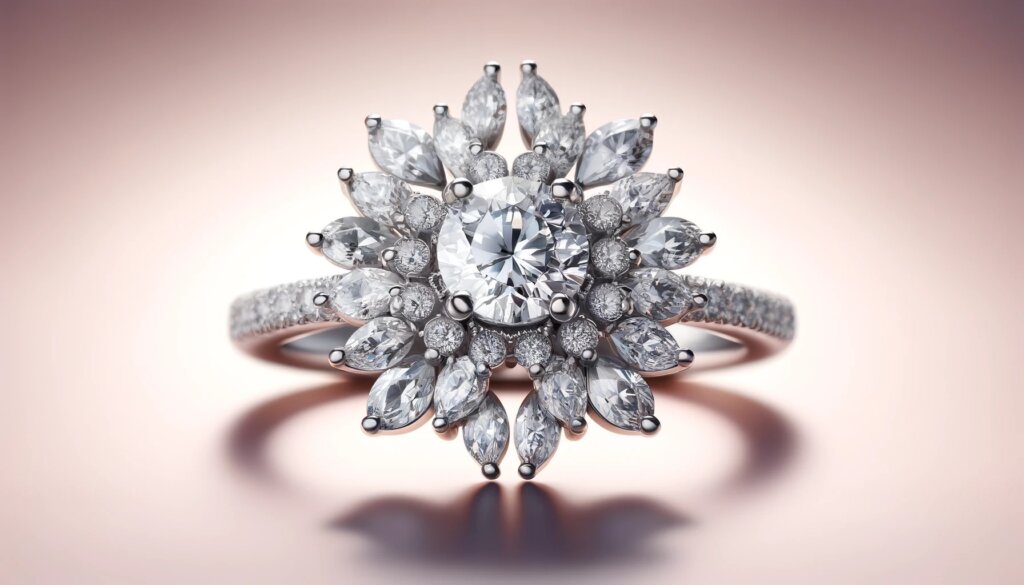
Key Features of Floral Engagement Ring Settings
The flower engagement ring setting is somewhat similar to the cluster setting, but with one key difference – those outer edges of the ring are specifically designed to mimic the petals on a flower.
In some instances, this may be very little, with the ring’s face-up appearance clearly designed to resemble, say, an open lily or a layered rose. In other instance, it may be a little more abstract, but still clearly distinguishable from the cluster.
The petals may be enclosed within a larger setting, like a bezel or halo – this can stop them from snagging on clothing – or they may reach out over the wearer’s other fingers. This is harder to wear, but certainly not impossible!
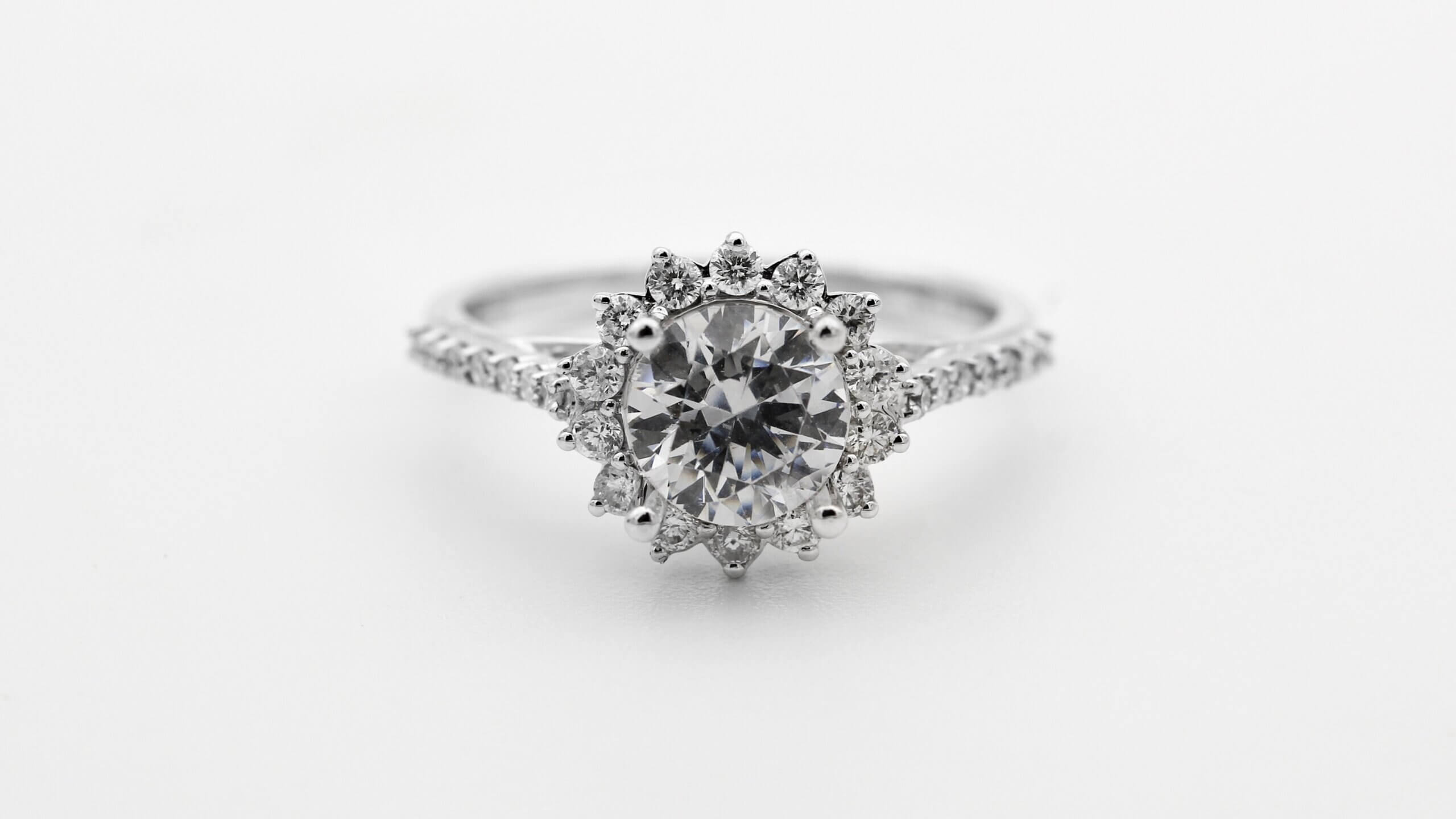
Diamonds in Flower Engagement Ring Settings
Choosing the right diamonds for a flower setting is trickier in one respect, since you’ll need more, but, since they’re generally smaller than the center stones of more traditional ring designs like the solitaire, you don’t have to be quite so cautious about clarity and color.
Then again, it’s vital that all the stones are very close together when it comes to color grade. If not, you’ll be able to see slight variations across the flower’s surface.
Flower Setting Impact on Diamond Size
The flower setting can play a trick on the eye, and make it look as though the central diamond is considerably bigger than it really is.
It does, however, depend on the size of the diamond. If the center diamond is only marginally bigger than the accent stones, this could achieve the opposite effect. The results will still be beautiful, and create a great amount of sparkle on the finger, but it probably won’t make your 0.5 carat diamond look like a 1.5 carat diamond.
Aim for a noticeable difference in size between the inner and outer diamonds if you want to make that center stone look a little bigger than it really is.
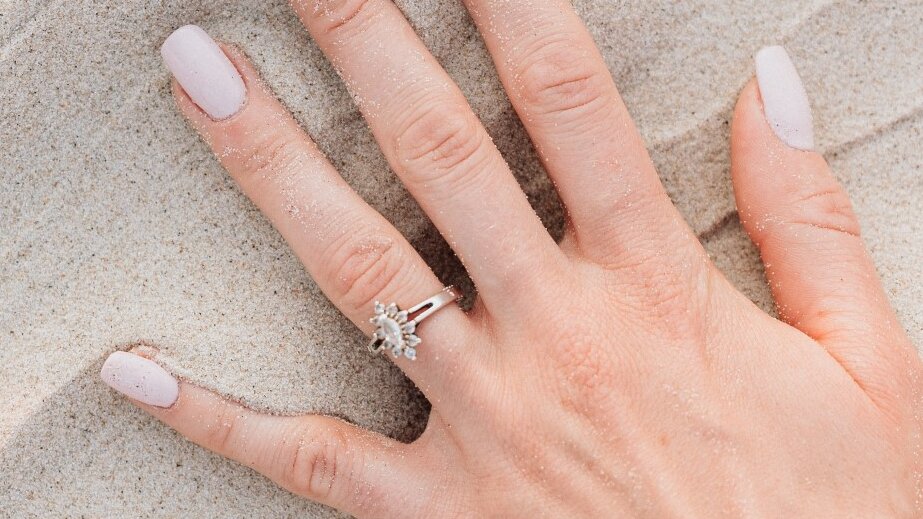
Flower Setting Impact on Light Performance
All diamonds sparkle, large or small, but a lower surface area means a different kind of sparkle not quite on a par with one large solitaire diamond.
The unique way a diamond sparkles is also known as its ‘light performance’ – which is, in turn, primarily determined by the cut, clarity and size of the diamond.
More facets cut into the stone mean that the light refracts off more surfaces, and creates more flashes of light. A better clarity means fewer blemishes to interrupt the light’s path through the center of the diamond. And, most important to the flower setting, a larger carat weight generally means a larger surface area to receive and emit light.
If your flower setting is built around a large center stone, then the ‘smaller’ sparkles of the accent stones creating the petals will simply amplify that diamond’s light performance.
If, on the other hand, your diamonds are all on the small side, you’ll notice a significant difference between that ring’s sparkle, and, say, a solitaire diamond ring.
Don’t get us wrong – the effect will be beautiful – but it just might not be as beautiful and mesmeric and breathtaking as the more popular diamond engagement rings we discuss on this site.
Practical Considerations
Not exactly. The unique, petalled shape of the flower setting makes it much more likely that the wearer will snag or catch it on her clothing, bag, or even the bedsheets while she sleeps.
Like a real flower, this setting should be considered one of the more delicate options, and could easily require constant checks of the prongs and diamonds for any signs of damage, than a setting better suited to an active or busy life.
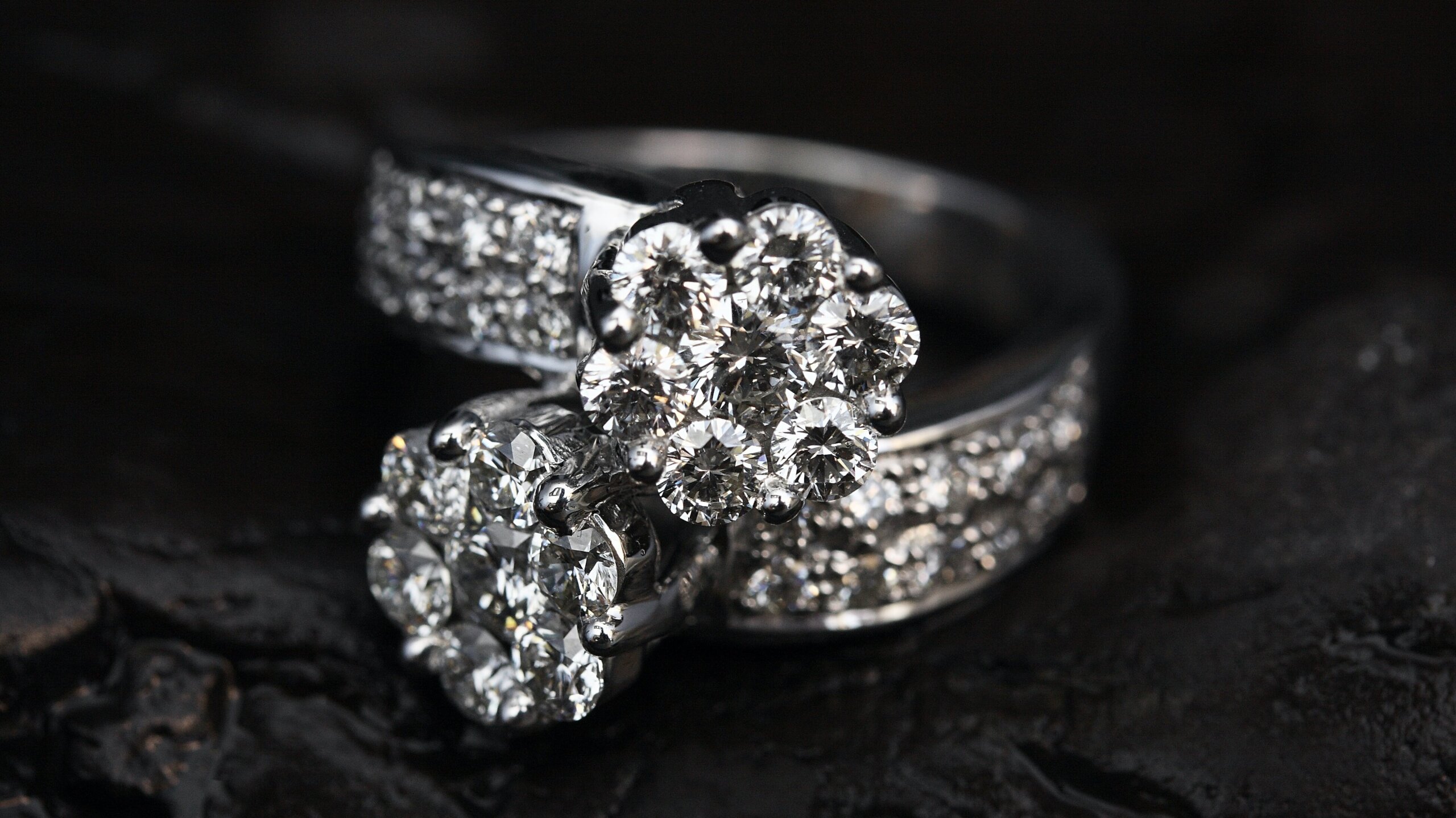
The smoother the edge of the setting, the less likely It is to get caught on loose fibers, or anything else that could begin to undermine the prongs holding those diamonds in place.
For this reason, we wouldn’t recommend this for anyone with a physically demanding job – instead, if you like the look of a cluster setting, we’d suggest you take a look at a pavé halo setting, which will offer a little more security during daily wear.
Another thing to consider is cleaning. Any fine or intricate parts of a diamond ring make keeping it clear of dust, oil, makeup, and moisturizer a pretty big chore – more than if it held a simpler shape. You’ll still only need to follow the usual directions on how to care for a diamond ring, but you may need to do it more often – and spend a little longer on those little accent stones – than others in order to maintain its shine.
Cost and Value Considerations
If you’re planning on using a much smaller diamond, and making it look bigger with accent stones, then that part of the cost will most likely work out much cheaper than investing in a considerably larger diamond. However, the flower setting is complex, and requires more time, skill, and attention from the jeweler to get right – which will cost a premium.
Like any diamond engagement ring, its total cost depends on a long list of factors. The diamond is the biggest expense, and if you find a setting that allows you to invest in one with a low carat weight, you’ll potentially save thousands.
Our Expert Take
The flower setting is a charming design ideally suited to those with a real flair for vintage styles, but it does mean that you and the intended wearer will need to make a few compromises. While you might be happy to invest in a ring that will require a little more maintenance than some of the other styles available, sparkle is a whole different story.
A large part of our fascination with diamonds lies in their unrivaled fire and brilliance – those flashes of white and colored light that erupt whenever the light hits. This means that a big part of your investment goes toward that sparkle.
In a flower engagement ring setting, unless your budget can stretch to a large center stone (on top of those accent diamonds) you’ll need to sacrifice that fire and brilliance for a smaller, more muted glitter that may not look quite as beguiling in person as it does in a picture.
Your best bet? Visit our online store and see what we have in this style – if you don’t have that gut feeling about any of them – or if you do – then that should cinch the deal one way or the other.
7 FAQs
- Q: What is a Flower Engagement Ring Setting?
- A: A flower engagement ring setting features a central diamond surrounded by smaller stones arranged to resemble flower petals, creating a unique and intricate floral design.
- Q: How Does a Flower Setting Affect the Ring’s Appearance?
- A: This setting enhances the ring’s aesthetic appeal, often making the central stone appear larger and adding a romantic, floral touch to the design.
- Q: Is a Flower Setting Suitable for Daily Wear?
- A: It can be, but consider the setting’s height and intricacy. Lower profile and simpler flower designs are generally more practical for everyday wear.
- Q: Can the Stones in a Flower Setting Loosen Easily?
- A: Like any intricate setting, there’s a risk of stones loosening, especially with wear and tear. Regular maintenance and careful handling are important.
- Q: Are Flower Settings More Expensive Than Traditional Settings?
- A: The cost varies depending on the complexity of the design and the number of stones used. Generally, intricate designs may cost more due to the craftsmanship required.
- Q: Can I Customize a Flower Engagement Ring Setting?
- A: Absolutely! Many jewelers offer customization options for flower settings, allowing you to choose the metal, the central stone, and the design of the petals.
- Q: How Do I Clean and Maintain a Flower Engagement Ring?
- A: Use a soft brush and mild soap solution to gently clean the ring. It’s crucial to reach the nooks between the petals where dirt can accumulate. Regular professional cleaning is also recommended.
Discover your perfect flower engagement ring setting with Jeweler AI – your personal guide to the world of exquisite and unique ring designs.
FOLLOW-UP GUIDE SERIES





